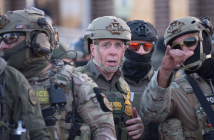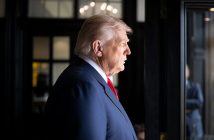-
- The U.S. and Panama strengthen security ties to counter China, including reopening a former military base and joint defense exercises.
-
- Panama exits China’s Belt and Road Initiative, marking a diplomatic win for the U.S.
-
- The U.S. reinforces control over the Panama Canal, ensuring neutrality against China’s influence.
-
- Fort Sherman reopens, boosting U.S. jungle warfare training and regional military readiness.
-
- New agreements secure trade routes, compensate Panama for waived tolls, and provide $230M in security aid.
In a decisive move to counter China’s growing influence in the Western Hemisphere, U.S. Secretary of Defense Pete Hegseth and Panamanian President José Raúl Mulino announced a sweeping expansion of bilateral security cooperation during a high-level meeting Monday. The agreement, which includes the reopening of a former U.S. military base and joint defense exercises, signals a strategic recalibration as Panama becomes the first nation in the Americas to exit China’s Belt and Road Initiative (BRI).
At the heart of the partnership is the Panama Canal, a vital artery for global trade that sees over 40% of U.S. container traffic—worth roughly $270 billion annually. While China operates key ports at either end of the canal, Hegseth made clear the U.S. will not tolerate any threats to the waterway’s neutrality. “China did not build this canal. China does not operate this canal, and China will not weaponize this canal,” he declared.
A strategic pivot from China
Panama’s decision to withdraw from the BRI marks a significant diplomatic victory for the Trump administration, which has warned against Beijing’s economic and military encroachment in Latin America. “We strongly welcome President Mulino’s commitment to make Panama the first country in our hemisphere to exit the Belt and Road Initiative,” Hegseth said, framing the move as a return to sovereignty.
The Chinese embassy in Panama fired back, accusing the U.S. of “blackmail” and “sensationalism,” but Panamanian officials emphasized their alignment with Washington. A joint statement highlighted Panama’s crackdown on illegal migration through the Darién Gap—a notorious smuggling corridor—and the resumption of large-scale military exercises like PANAMAX 2026, which will bolster regional readiness.
Fort Sherman and jungle warfare training
One of the most symbolic developments is the partial reopening of Fort Sherman, a former U.S. jungle warfare training site abandoned in 1999. The “Jungle School” once trained 9,000 troops annually, and its revival underscores the Pentagon’s focus on tactical superiority. “I should never put you in a fair fight,” Hegseth told U.S. troops stationed in Panama. “My job is to put you in a fight where you are overwhelming.”
The facility’s return aligns with the Trump administration’s push to reassert influence over the canal zone, which was ceded to Panama under President Jimmy Carter. Though full ownership remains off the table, the U.S. will expand military coordination, including expedited naval transit and cyber defense partnerships with the Panama Canal Authority.
Security and trade guarantees
The new agreements include a “First and Free” mechanism to compensate Panama for waived canal tolls, a critical incentive for maintaining unrestricted maritime access. Analysts say the deal strengthens Panama’s economy while securing U.S. commercial and military interests.
Hegseth’s visit also reaffirmed $230 million in U.S. security aid over five years, funding counter-narcotics operations and border enforcement. President Mulino praised the collaboration, in a sharp contrast to his predecessor’s warmer ties with Beijing.
The Panama Canal remains one of the world’s most strategic chokepoints, and the U.S.-Panama partnership ensures it stays open, neutral, and free from coercion. The deal represents a return to assertive diplomacy—one that prioritizes American interests without direct ownership. As Hegseth put it: “Together, we will take back the canal from China’s influence.” Whether through military presence, economic leverage, or diplomatic persuasion, the message is clear: the U.S. is back in the game.
Sources for this article include:





Leave a Reply